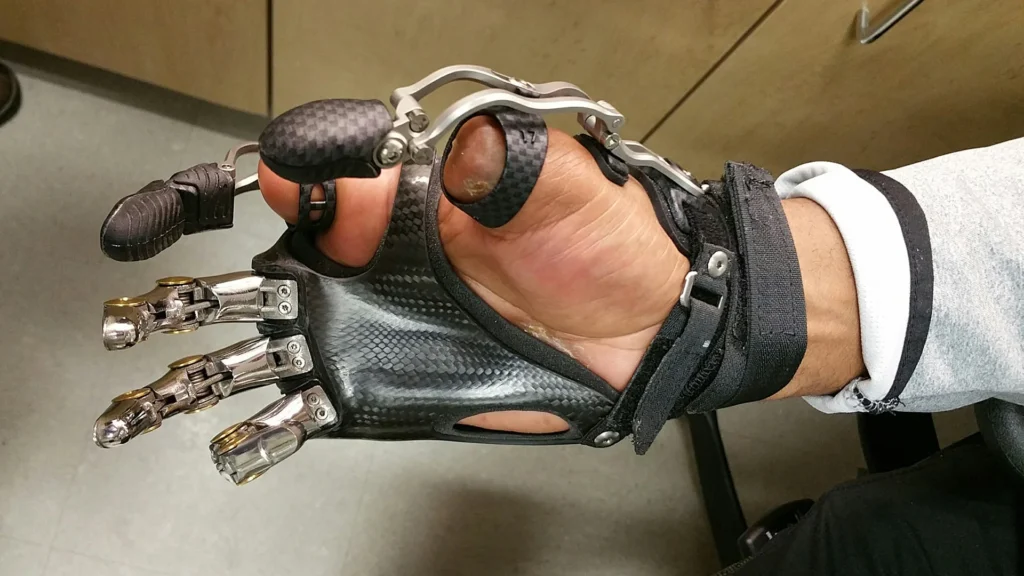Prosthetic fingers are artificial devices designed to replace missing or non-functional fingers. They work by replicating the basic functions and appearance of natural fingers to varying degrees, depending on the design and technology used. Here’s an overview of how prosthetic fingers typically work:
Attachment:
Prosthetic fingers are attached to the remaining part of the hand or arm through various methods such as straps, adhesive, suction, or by being surgically implanted.
Movement:
Most prosthetic fingers are designed to mimic the movement of natural fingers to some extent. This can be achieved through different mechanisms: Passive prosthetics: These are non-functional and provide a cosmetic replacement for missing fingers. They are often made of silicone or other materials to match the appearance of the remaining fingers. Body-powered prosthetics: These use cables or harnesses connected to the user’s body movements, typically involving the wrist or other parts of the arm, to control the movement of the prosthetic fingers. Myoelectric prosthetics: These are powered by electrical signals generated by the muscles in the residual limb. Electrodes placed on the skin detect these signals and translate them into movement commands for the prosthetic fingers.
Grip:
Prosthetic fingers may have various grip patterns or mechanisms to allow users to grasp and manipulate objects. This can range from simple designs that rely on friction to more complex mechanisms that replicate the movements of natural fingers.
Contact with Us – Now
Customization:
Prosthetic fingers can be customized to fit the individual needs and preferences of the user. They can be made from different materials, such as silicone, plastic, or metal, and can be tailored to match the size, shape, and skin tone of the remaining fingers.
Sensory feedback (in advanced prosthetics):
Some advanced prosthetic fingers incorporate sensory feedback systems that provide users with a sense of touch. This can be achieved through sensors embedded in the prosthetic that detect pressure or other tactile sensations and transmit them to the user’s residual limb.
Conclusion: Prosthetic Fingers
Overall, prosthetic fingers aim to restore function and appearance to individuals who have lost all or part of their fingers, helping them perform daily tasks and improve their quality of life. Advances in technology continue to drive improvements in the design and functionality of prosthetic fingers, making them more natural-looking and functional than ever before.



Pingback: Advanced Prosthetic Arms - Finger Prosthetics